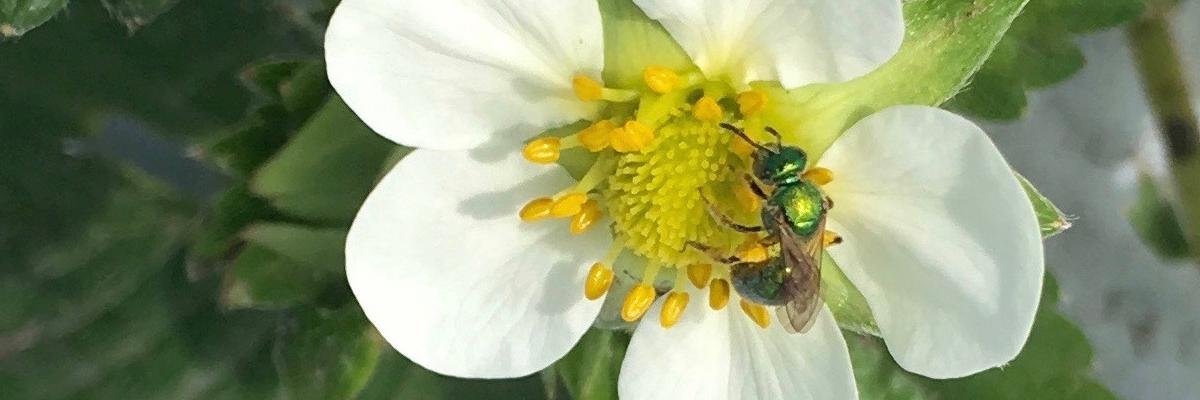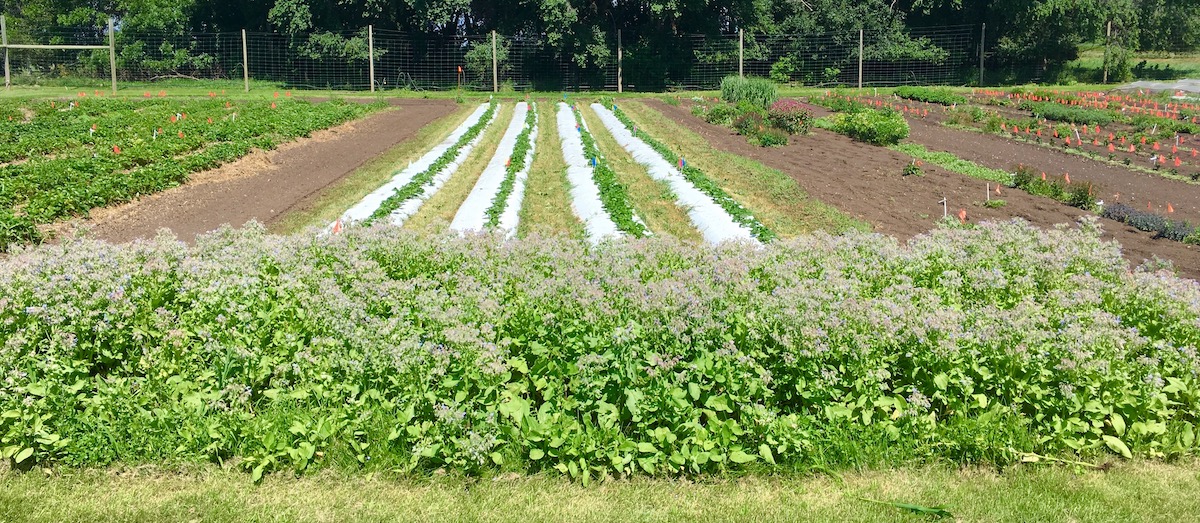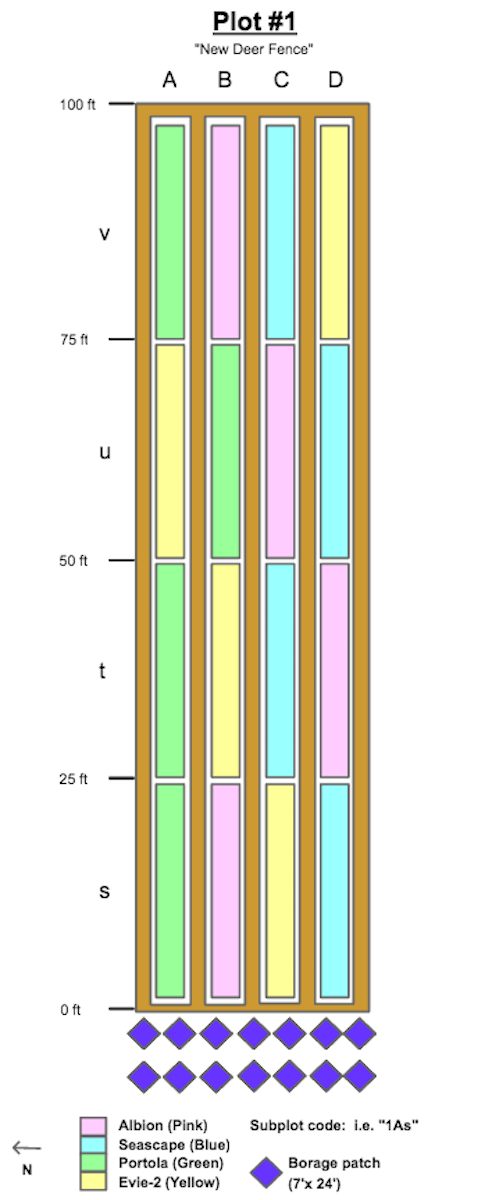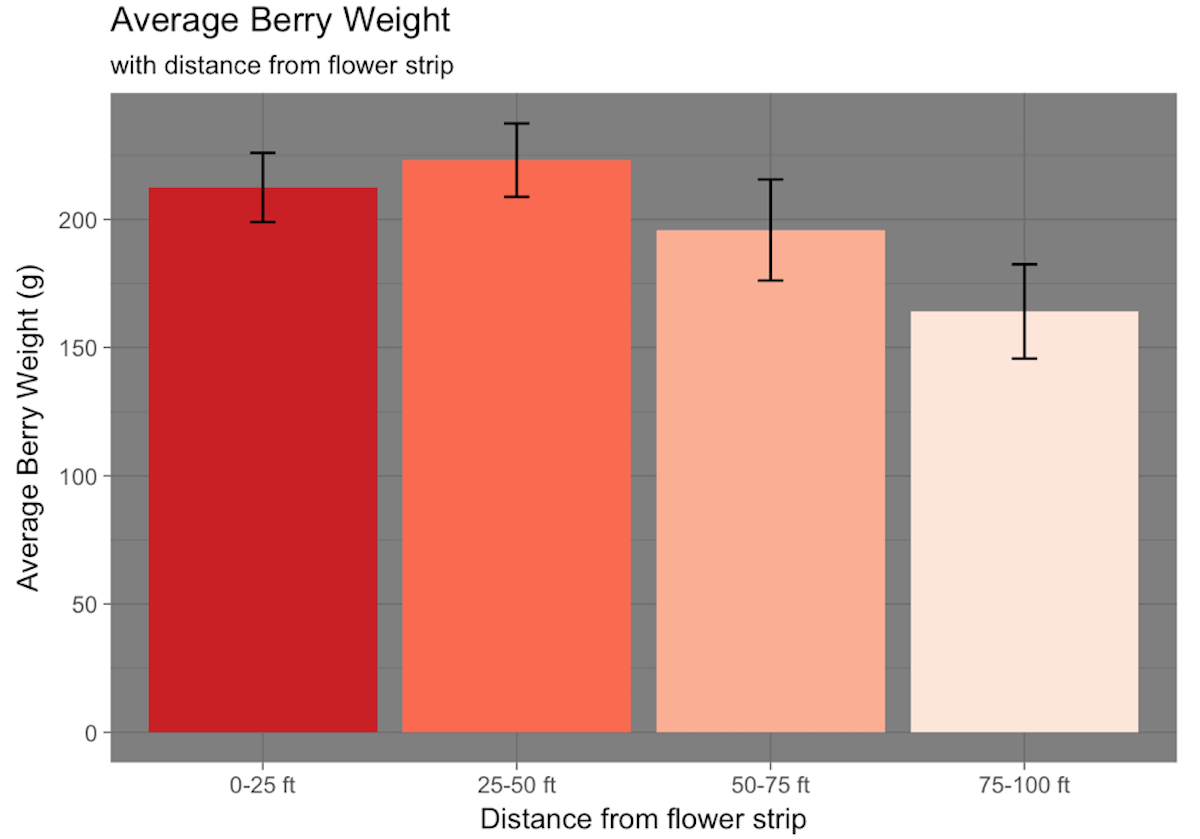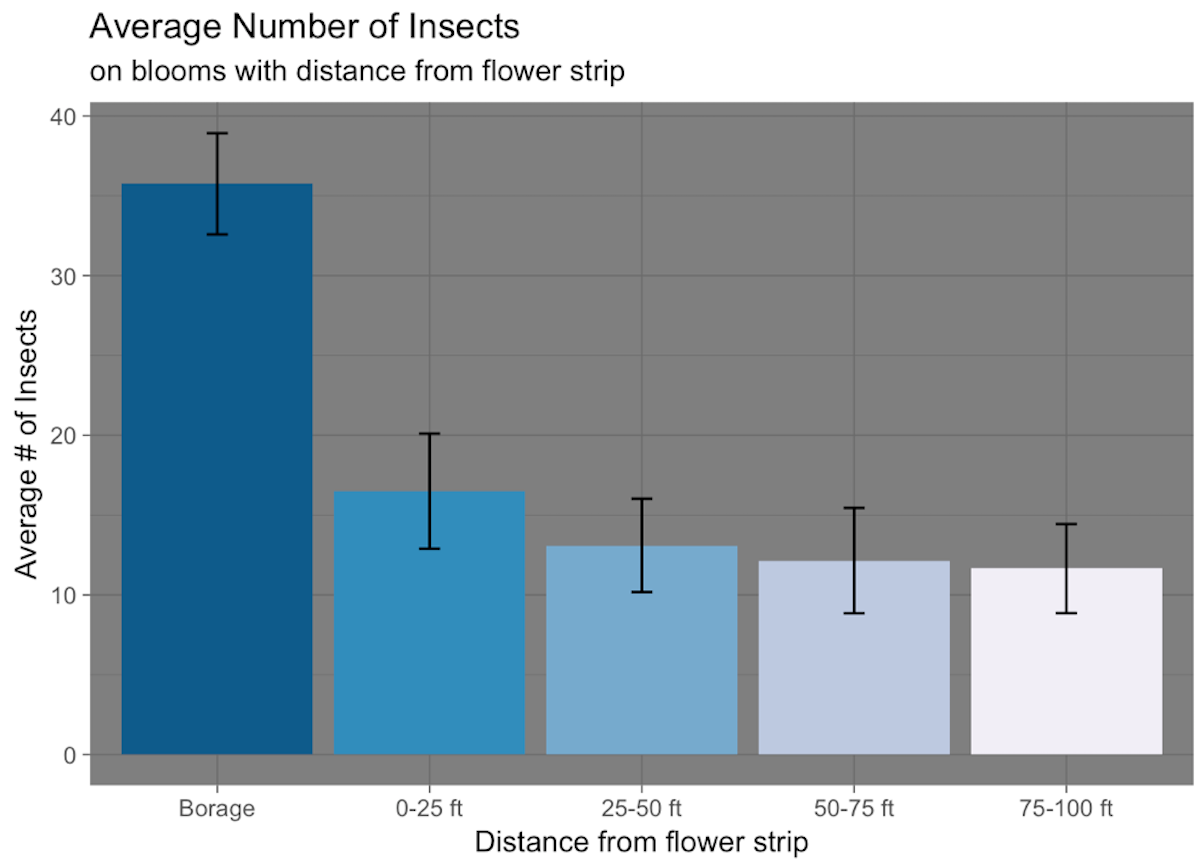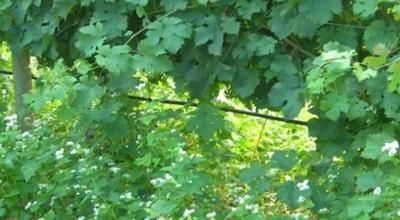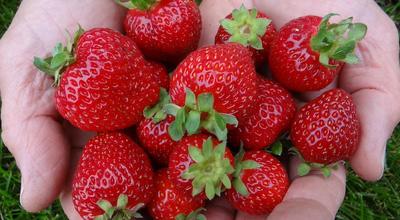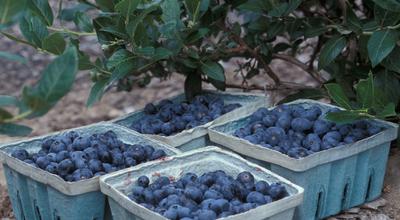Over 75% of our crop species worldwide benefit from animal pollinators for fruit development. Strawberries are a great example of a crop that can self-pollinate, but will produce bigger, better berries if pollinated by flying insects.
With the emergence of colony collapse disorder (CCD) and a struggling honeybee industry, attention is shifting to the value of wild and native insect populations for pollination services. Many are beginning to pay attention to the crop benefits that come from maintaining pollinator habitat and floral resources on farms, but academic research is just beginning to catch up.
The experiment
Since 2016 we've been running an experiment that examines whether planting pollinator-attractive flowers like borage (Borago officinalis) can improve strawberry production by recruiting wild pollinators from the surrounding landscape, thereby improving pollination and fruit development.
At the West Central Research and Outreach Center in Morris, MN, our team planted 3 plots of 4 varieties of day-neutral strawberries and established a patch of borage on one end to attract and host pollinating insects. Borage, an edible blue flower, is highly attractive to bees, competes well with weeds, and blooms continually throughout the season. Our hypothesis is that strawberry flowers closer to the borage patch will receive more insect visits, be more fully pollinated, and thereby produce bigger, higher quality strawberries.
Over two growing seasons, we measured total berry number, total berry weight, and individual berry weight as well as strawberry pollinator abundance and richness. In order to sample strawberry pollinators, we used an insect vacuum to collect specimens found on open strawberry blossoms. This made collection both more accurate and pollinator friendly.
Does borage plus bees equal better berries?
While we are still analyzing data from 2018, data from the previous year indicates that with increasing distance from the experimental flower strip, average strawberry yield and pollinator abundance appear to decrease, with a significantly lower average berry weight in the plot farthest from the flower strip, compared to the first 50 feet.
Primary strawberry flower visitors were hoverflies (Syrphidae) and native bees, such as the metallic green sweat bee pictured above, suggesting strawberry pollination may rely more on small bees and fly (Diptera) species than larger pollinators like honeybees and bumblebees. The borage patch itself hosted a wide diversity of insect pollinators, including honeybees, bumblebees, syrphid flies, and native bees.
Looking ahead
Although results from the study are still preliminary, it appears there may be a berry weight benefit for those strawberry plants located closer to the borage patch, due to increased insect pollinator activity. Many questions remain about how best to design pollinator habitat elements on a farm in order to reduce issues like space limitations, pollination competition, or pest hosting. Still, there is mounting evidence to suggest that adding floral diversity to a pollination-dependent cropping system may benefit both the farmer and local beneficial insect populations.
There are many ways to incorporate pollinator farmscaping into your own practices, whether in a home garden setting or a large-scale production operation. This can begin with simply mowing less, to allow early season flowers like clover and dandelion to thrive when floral resources are low. Planting annual flowering species can be one way to experiment with flower plantings at low cost with little risk. Some flower strips could even serve as secondary crops, as many flowers are edible, have medicinal properties, or can be sold as cut flowers. More long-term permanent establishments include perennial flower plantings or even restored prairie landscapes.
More info
To learn more, you can read other articles about the project on UMN Extension Vegetable News, the WCROC Newsletter, or the MOSES Organic Broadcaster.
UMN Exetension has information about growing landscape to help pollinators and including beneficial plants in riparian buffers.
The UMN Bee Lab can help you learn all kinds of things about bees and other pollinators.
The Xerces Society has many resources available to help design and integrate these sorts of practices on farms.
